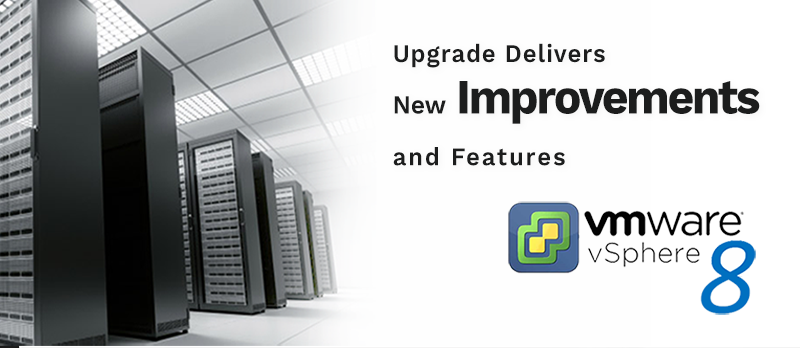We generally give vSphere 8 a “buy” recommendation right out of the gate, but everyone’s situation is different, and every upgrade requires a careful look at your specific needs and what impacts the changes will make to your environment. That said, here are some of the most enticing upgrades.
vSphere 8 Improvements: Performance
vSphere 8’s performance improvements are straight forward: you get more to do more and ultimately, get more value for your money. The improvements that piqued our interest include:
Further Enhancements of VMware DRS for Memory when using PMEM
The new DRS provides better memory management, largely by using memory statistics and alerts to optimize VM placement decisions without affecting performance or resources.
Improvements to VM NUMA Definition
The interface has been simplified, making configuration and NUMA use easier and more accessible.
Increased Maximums
This is where VMware is providing more value for your money by simply opening the maximums of hosts and VMs per cluster. For example, hosts managed by Lifecycle Manager increased from 400 to 1,000 and the number of VMs per cluster rose from 8,000 to 10,000.
AI/Machine Learning Improvements
AI and ML applications are on the rise everywhere in business, and they use computing resources differently. VMware has added new hardware accelerators that can be optimized for AI and ML applications, improving their performance and resource consumption.
vSphere 8 Improvements: Security
Security continues to be a focus for data centers as the threats continue to be more pervasive and sophisticated and as the environment becomes more complex (think remote logins, bring your own device, etc.) VMware made several security Improvements to beef up safety and reliability, including:
Virtual TPM Provisioning Policy
Windows requires all VMs to have a unique TPM which historically were problematic when cloning or deploying new VMs. The new provisioning policy automatically provides a compliant, best practice approach to assigning unique TPM devices to all VMs at scale.
TPM 2.0 Hardware is Supported
All previous versions are no longer supported, and you’ll get a message warning you during an install or upgrade if older versions are still present.
Prevent Execution of Untrusted Binaries:
In the new version, the execInstalledOnly option is turned on by default. All binaries must be installed via a VIB, and this feature ensures compliance.
TLS 1.2 is Only Supported
The new TLS version is more secure. For better or worse, TLS 1.0 and 1.1 are no longer supported, so you or the administrator may have to ensure everything is updated for this feature to work.
vSphere 8 New Features: vSphere DPU Support
DPU (Data Processing Units) support has been promised for a while and previously went under the name “Project Monterey.” Now, it’s here. DPUs are hardware cards/add-ons that can take on specific data workloads outside the CPU, optimizing performance and reducing the overall CPU load. Models are available from Nvidia, AMD, and Intel. Via the new vSphere Distributed Services Engine and Interface, you can optimally offload network and security workloads to the DPUs to accelerate performance. These features and the DPUs themselves will be new to many admins/managers and warrant exploration.
vSphere 8 New Features: vSAN Express Storage Architecture (ESA)
vSAN ESA was four years in the making and is certainly worth the wait. vSAN ESA is an alternative storage management architecture to Original Storage Architecture (OSA) that provides increased efficiency, scalability, and performance, allowing you to achieve great strides in performance without changing or upgrading hardware. It provides higher performance over OSA which has been available in all past versions. The benefits include:
⦁ Increased Simplicity and Ease of Use
⦁ Reduced Hardware Requirements and Lowered Cost
Overall, our recommendation is to take advantage of everything the new vSphere 8 offers.
In short: Converge team say…Go for it!
As with any upgrade, it’s never as simple as just installing it, as each environment is different, and dependencies may exist in unexpected places. Some might want to try it in a test environment, while others may feel comfortable jumping right in. We suggest doing a routine assessment of the environment, identifying potential risks, mapping out any dependencies, and creating a migration plan. The software is expansive, and even seasoned users will find areas they haven’t used or aren’t familiar with. We recommend talking to a vSphere expert to learn what vSphere 8 can do and what value it can provide to your organization.
Need help?
Converge and our team in Canada can help and support you in reviewing your situation or completing your project. Feel free to contact us to discuss your objectives or ask questions.
Darren Livingston,
VP of Engineering
Converge Technology Solutions Corp.
Thank you to our partner




